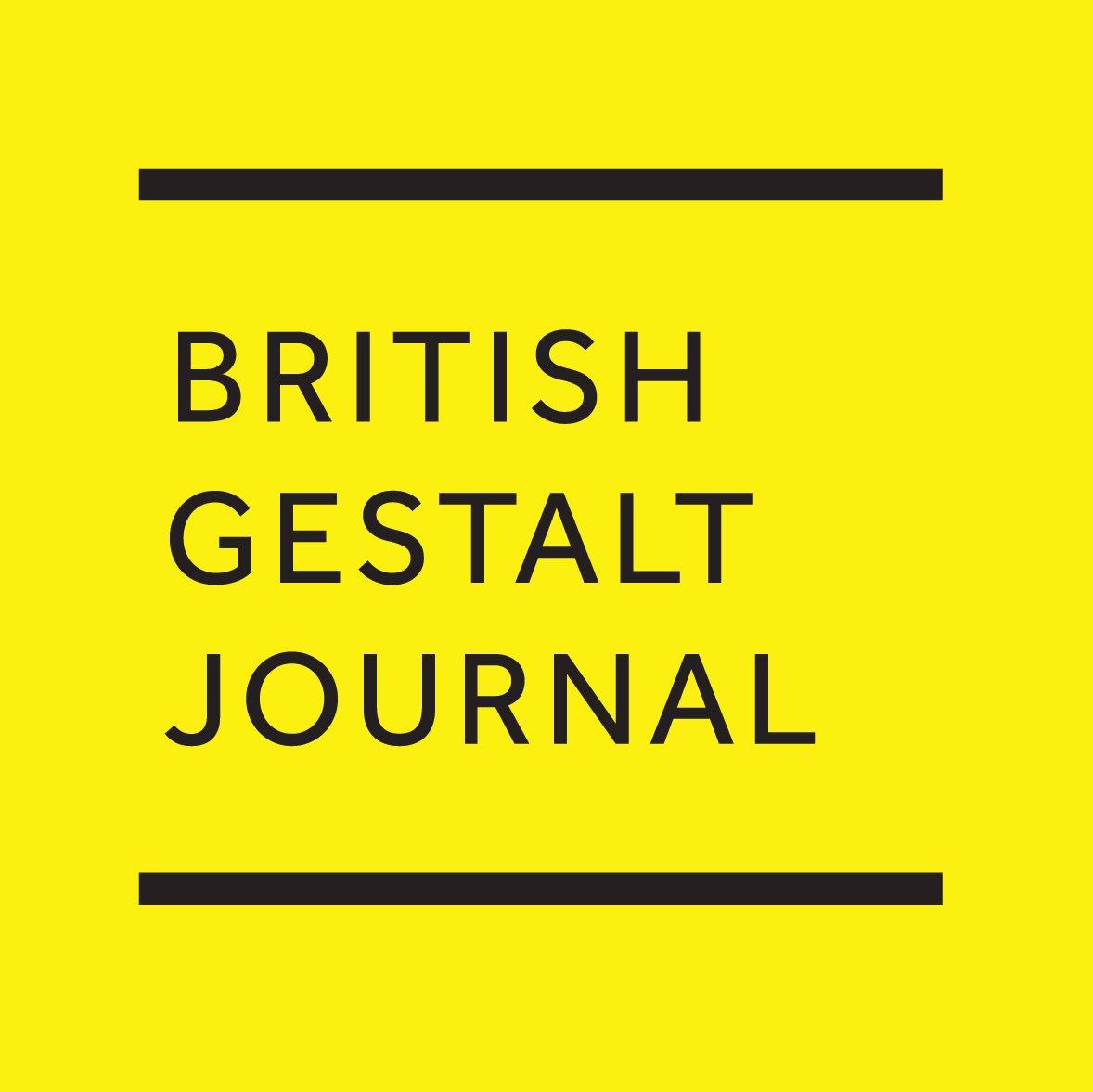Volume 5, 1 (1996)
Volume 5, 1 (1996)
The British Gestalt Journal 1996, Volume 5, 1
CONTENTS
Editorial - Malcolm Parlett
‘Perls-ism’, Gestalt Therapy and the Concentration on personal Process - Edward W.L.Smith
The Unknown Carried in Relationship (Translated by Gordon Wheeler) - Jean-Marie Robine
The Zeigarnik Effect and the Concept of Unfinished Business in Gestalt Therapy - Elena Mazur
The Power of Silence in Groups - John Bernard Harris
A Cognitive Perspective for Gestalt Therapy - Iris E.Fodor
EDITORIAL
The British Gestalt Journal embodies the more ‘professional' and 'academic' end of Gestalt. We have always recognised the paradoxes and contradictions into which this priority can lead us. The Gestalt approach places emphasis on deepening experience of a more 'right brain' kind to balance the usual predominance of 'left brain' thinking and talking. Immersed, as we all are, in a wider culture which over-values talk, explanation, rational discourse, Gestalt stands for something else, a different balance, a letting go of words sometimes, and a quietening of mind and opening of heart.
A similar paradox faced Perls, Hefferline and Goodman in their Gestalt Therapy: Excitement and Growth in the Human Personality, (1951), where the authors speak of the need to acquire the ‘Gestalt mentality' in order fully to comprehend the text; yet the book is also designed to communicate this 'mentality’. In earlier editorials we have spoken of the need to bring both rational and poetic language to bear on the phenomena and issues that we deal with as Gestaltists - left and right brain together, not regarded competitively or as if the corpus collosum has been severed.
We may not have achieved the balance in the BGJ we wanted - after all, we have the constraint that we are a verbal medium. It is true that we have not published poetry or vivid personal accounts. Choicefully, we have inclined towards professional themes, theory, accounts of practice. We have sought to redeem intellectual issues and theory from the waste paper bin to which a generation of Gestaltists seemed to consign them.
Part of the job of an avowedly academic-style journal is to ‘locate’ itself, and the speciality it represents and articulates, within the great spread of disciplines and kinds of intellectual discourse which exist. This necessitates also adhering to the criteria as to what ideas and kinds of knowing are generally considered 'accepted, proven, and reasonable' and which ones are discounted as 'loony, weird, and nonsensensical'. These criteria obviously differ from discipline to discipline, yet with areas of consensus.
Within Gestalt psychotherapy, as in many other areas, particularly scientific ones, there has been a diffidence or hesitation when it comes to parapsychological phenomena or other topics which have been labelled 'unproven’ despite numerous personal experiences of them. It was Freud, not Jung, who Perls and Goodman were most influenced by, and there was something decidedly secular and anti-mystical about the early Gestalt therapists. At the same time as experiences of a non-verbal kind were being championed, there was nevertheless suspicion of anything that might be considered 'occult' or 'religious'.
Yet the world has moved on, and what was 'fringe’ and 'weird' has become more acceptable. At a recent conference of 'Mystics and Scientists' I discovered that leading physicists and trans-disciplinary researchers now take for granted that phenomena such as synchronicity, direct communication between people without any sensory involvement (telepathy and the like), near death experiences, and much else formerly derided by the scientific community, are 'valid' phenomena, needing to be explained rather than explained away. We are well into a revolutionary phase of explosive knowledge that blows apart assumptions which are centuries old.
In this issue, therefore, we are delighted to include the paper by Jean-Marie Robine, that dips into the mystery of synchronicity. At the same time, we also welcome the down to earth account of Gestalt in relation to cognitive therapy, as well as other contributions on themes of enduring concern to Gestalt practitioners: process, unfinished business, and the figure/ground of silence and speech. We are proud of the range and quality of articles included, as well as the letters and reviews. (Unfortunately, the tribute to Ischa Bloomberg, promised for this issue, was not ready in time for inclusion, and will be held over.) Welcome to Volume 5!
Malcolm Parlett
Letters to the Editor:
In and Out of the Deep Freeze - A Reply to Resnick - John Wheway
Postmodernism, Narrative Theory and Reflecting Teams: A Reply to Robert Resnick - Peter Cantwell
Differences that Separate, Differences that Connect: A Reply to Wheway and to Cantwell - Robert W.Resnick
Book Reviews:
On Intimate Ground, Edited by Gordon Wheeler and Stephanie Backman - Maria Gilbert
Healing Tasks: Psychotherapy with Adult Survivors of Childhood Abuse, by James L.Kepner - Judith Hemming
A Population of Selves: A Therapeutic Explanation of Personal Diversity, by Erving Polster - Peter Philippson
The Collective Silence, Edited by Barbara Heimansberg and Christopher J.Schmidt, translated by Cynthia Oudejans Harris and Gordon Wheeler - Marianne Fry
Opinion:
On Working as a Bereavement Counsellor - Helen Manning

